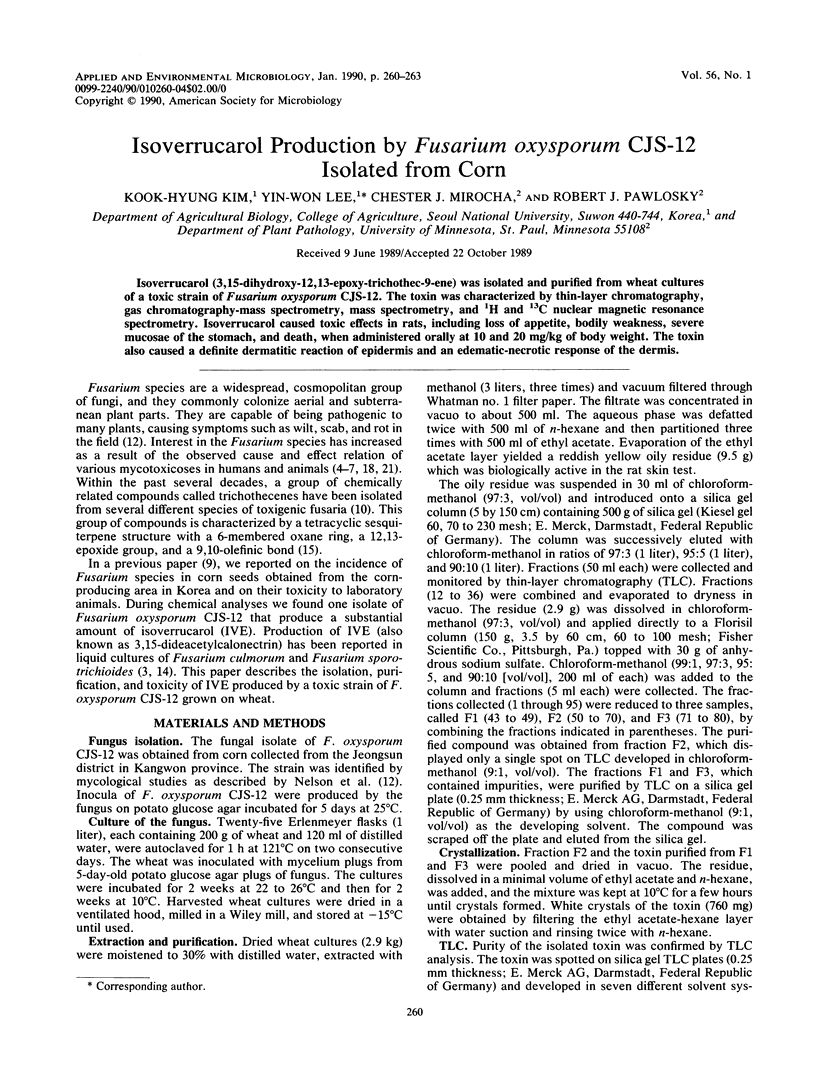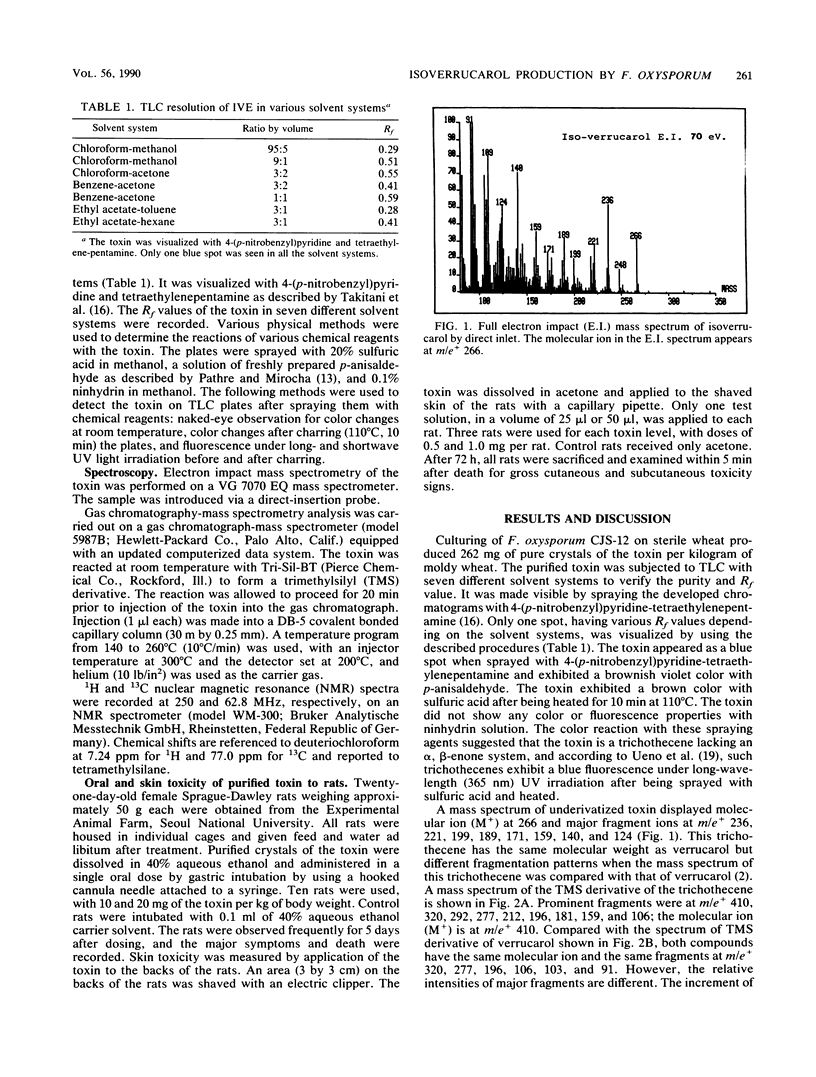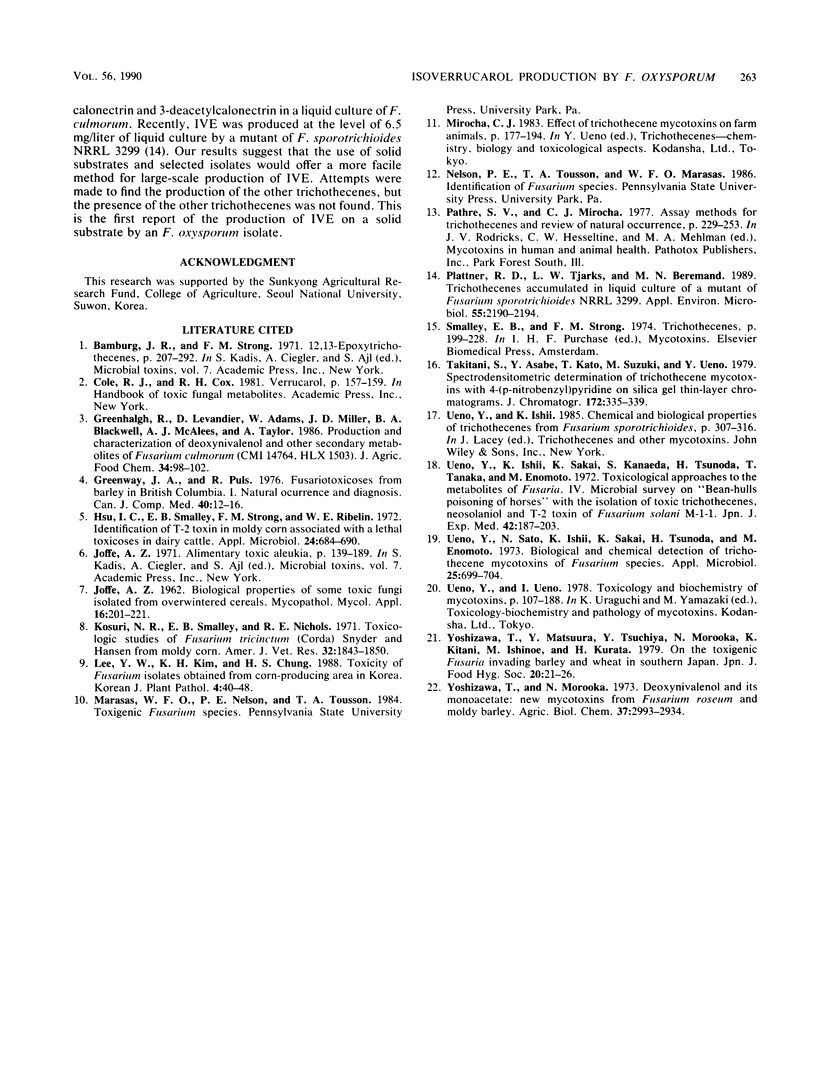Abstract
Isoverrucarol (3,15-dihydroxy-12,13-epoxy-trichothec-9-ene) was isolated and purified from wheat cultures of a toxic strain of Fusarium oxysporum CJS-12. The toxin was characterized by thin-layer chromatography, gas chromatography-mass spectrometry, and 1H and 13C nuclear magnetic resonance spectrometry. Isoverrucarol caused toxic effects in rats, including loss of appetite, bodily weakness, severe mucosae of the stomach, and death, when administered orally at 10 and 20 mg/kg of body weight. The toxin also caused a definite dermatitic reaction of epidermis and an edematic-necrotic response of the dermis.
Full text
PDF



Selected References
These references are in PubMed. This may not be the complete list of references from this article.
- Greenway J. A., Puls R. Fusariotoxicosis from barley in British Columbia. I. Natural occurrence and diagnosis. Can J Comp Med. 1976 Jan;40(1):12–15. [PMC free article] [PubMed] [Google Scholar]
- Hsu I. C., Smalley E. B., Strong F. M., Ribelin W. E. Identification of T-2 toxin in moldy corn associated with a lethal toxicosis in dairy cattle. Appl Microbiol. 1972 Nov;24(5):684–690. doi: 10.1128/am.24.5.684-690.1972. [DOI] [PMC free article] [PubMed] [Google Scholar]
- JOFFE A. Z. Biological properties of some toxic fungi isolated from overwintered cereals. Mycopathol Mycol Appl. 1962 Mar 10;16:201–221. doi: 10.1007/BF02145732. [DOI] [PubMed] [Google Scholar]
- Kosuri N. R., Smalley E. B., Nichols R. E. Toxicologic studies of Fusarium tricinctum (Corda) Snyder et Hansen from moldy corn. Am J Vet Res. 1971 Nov;32(11):1843–1850. [PubMed] [Google Scholar]
- Plattner R. D., Tjarks L. W., Beremand M. N. Trichothecenes accumulated in liquid culture of a mutant of Fusarium sporotrichioides NRRL 3299. Appl Environ Microbiol. 1989 Sep;55(9):2190–2194. doi: 10.1128/aem.55.9.2190-2194.1989. [DOI] [PMC free article] [PubMed] [Google Scholar]
- Takitani S., Asabe Y., Kato T., Suzuki M., Ueno Y. Spectrodensitometric determination of trichothecene mycotoxins with 4-(p-nitrobenzyl)pyridine on silica gel thin-layer chromatograms. J Chromatogr. 1979 Apr 21;172:335–342. doi: 10.1016/s0021-9673(00)90970-1. [DOI] [PubMed] [Google Scholar]
- Ueno Y., Ishii K., Sakai K., Kanaeda S., Tsunoda H. Toxicological approaches to the metabolites of Fusaria. IV. Microbial survey on "bean-hulls poisoning of horses" with the isolation of toxic trichothecenes, neosolaniol and T-2 toxin of Fusarium solani M-1-1. Jpn J Exp Med. 1972 Jun;42(3):187–203. [PubMed] [Google Scholar]
- Ueno Y., Sato N., Ishii K., Sakai K., Tsunoda H. Biological and chemical detection of trichothecene mycotoxins of Fusarium species. Appl Microbiol. 1973 Apr;25(4):699–704. doi: 10.1128/am.25.4.699-704.1973. [DOI] [PMC free article] [PubMed] [Google Scholar]


